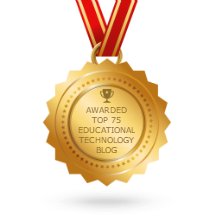![]() Last night I was looking through my RSS reader and came across this entry from Designed to Inspire:
Last night I was looking through my RSS reader and came across this entry from Designed to Inspire:
AECT 2010 Research Symposium
By Jennifer Maddrell on presentationThis summer, the Association for Educational Communication and Technology (AECT) sponsored a Distance Learning Symposium held at the Indiana University campus in Bloomington, IN. While presenters will be turning their papers and presentations into chapters for an upcoming book, for now (how long?) they have posted the symposium papers for open review.
I attended and presented on (what else?) backchannel communication during the live web conferenced lecture session. I have attached my symposium paper and presentation to this post. While my paper considers the backchannel in terms of cognitive load (influence on germane, extraneous, intrinsic load), my presentation highlighted general observations from Dr. Alec Couros’ Fall 2009 ECI 831 class at the University of Regina, specifically a session facilitated by Dr. Rick Schwier who also attended and presented at the symposium. As usual, it was interesting how few seemed to have experienced an active text-chat occurring simultaneously with a live lecture session. This could be due to the disconnect between those who “study” distance learning and those who regularly “practice” it .. or because distance learning is so often facilitated asynchronously.
Attachment Size Maddrell Watson AECT 2010 Summer DL Symposium Paper Submited.pdf 177.77 KB Backchannel Communication Maddrell Watson Final.pptx 1.35 MB
Now if you clicked on the link for the Distance Learning Symposium, the titles and abstracts of the papers that were presented are quite interesting. For those of you who don’t know, the Association for Educational Communications and Technology or AECT describes itself as:
The Association for Educational Communications and Technology (AECT) is a professional association of thousands of educators and others whose activities are directed toward improving instruction through technology. AECT members may be found in colleges and universities; in the Armed Forces and industry; in museums, libraries, and hospitals; in the many places where edu cational change is underway. AECT members carry out a wide range of responsibilities in the study, planning, application, and production of communications media for instruction.
The Association has become a major organization for those actively involved in the designing of instruction and a systematic approach to learning. It provides an international forum for the exchange and dissemination of ideas for its members and for larger audiences; it is the national and international spokesperson for the improvement of instruction; and, it is the most recognized association of information concerning a wide range of instructional and educational technology. Along with over 2,000 members, we have 24 state and six international affiliates who are all passionate about finding better ways to help people learn. AECT is the oldest professional home for this field of interest and has continuously maintained a central position in the field, promoting high standards, both in scholarship and in practice. AECT has 10 divisions that represent the breadth and depth of the field. The association produces two bimonthly journals, Educational Technology Research and Development and TechTrends.
It is interesting that this major organization, the oldest professional home for people interested in improving instruction through technology hosted a distance education symposium and, of the 19 sessions listed, there wasn’t a single session that focused on K-12 distance education. Granted, many of the sessions were theoretical or conceptual in nature. However, those of us involved in the study of K-12 distance education would generally agree that theoretical and conceptual frameworks that are applied or based on adult learners often have limited application at the K-12 level.
I don’t say this, or point it out, to necessarily pick on AECT. But it does beg the question that the oldest and one of the largest professional organizations for academics in the field of educational technology (which are the departments that most of us university-based K-12 online learning researchers teach in) has a distance learning symposium and there is a total absence of K-12 sessions. I’m not sure if it is a sad reflection on or opportunity within this organization. I can tell you that the up-coming annual conference in October will have several K-12 online learning sessions (and the 2009 annual conference was pretty good too, see AECT 2009 – Catching Up).






 12 Unique Blogs Are Written By Professors
12 Unique Blogs Are Written By Professors
[…] to see only one session that didn’t have my name attached to it. As I discussed in K-12 Distance Education And The Association For Educational Communications And Technology, I wonder if this is a reflection of the priorities of the organization or the fact that AECT […]
Pingback by AECT 2010 And Virtual Schooling « Virtual School Meanderings — August 27, 2010 @ 12:22 pm |